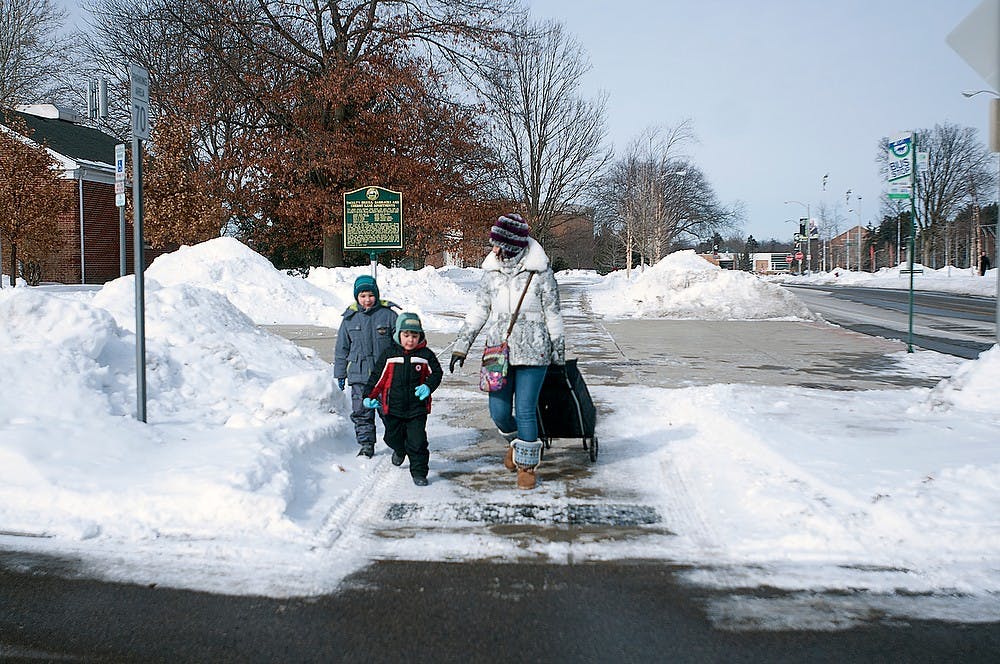East Lansing is having increasingly cold temperatures this week, with the high below 20 degrees every day until Saturday.
Due to these cold temperatures, students have been bundling up and preparing for the extreme cold weather.
“It’s really imperative to wear multiple layers,” Ed Rosick, assistant professor of family and community medicine, said.
International relations and economics senior Jesus Vega said he keeps warm by wearing running pants under his jeans, as well as a bandana to keep his face warm.
Neuroscience and psychology senior Chelsea Johnson said when it’s especially cold, she opts to drive to class, instead of walking.
“It sucks cause there’s no good parking on campus, so I always have to park really far, and I still end up walking. But, it’s not as far as it would be if I didn’t drive,” Johnson said.
To stay warm, Johnson said she wears a coat that goes down to her ankles. Johnson, like Vega, said her face gets coldest, so she covers her head as well.
“I just wrap a scarf all the way up to my eyeballs,” Johnson said.
While Johnson prefers to drive, Vega tends to walk everywhere.
He said moving around makes it possible to “remain toasty,” especially when he walks at a brisk pace.
Rosick recommends any student who is going to be outside for more than 10 or 15 minutes wear a couple pairs of socks, as well as a sweater or sweatshirt and a thick jacket.
He maintains that layers are important because you’ll be able to keep warm outside, and then you can shed layers indoors as needed.
To avoid frostbite, Rosick insists that students keep their skin covered, especially their hands and their face, because once it gets below zero parts of people’s bodies can get cold pretty fast.
The Centers for Disease Control and Prevention’s website is informative on frostbite and hypothermia, as well as what to do if it happens.
The website states that signs of frostbite are a white or grayish-yellow skin color, unusually firm or waxy skin and numbness.
Frostbite is not as serious as hypothermia, which has warning signs that include shivering, confusion, memory loss, exhaustion, slurred speech and fumbling hands.
The website also has tips for the best ways to dress in the cold. It recommends wearing mittens instead of gloves, makeing sure sleeves are snug at the wrist and wearing a water-resistant coat, hat and pair of shoes.
The National Weather Service website features a chart showing the amount of time it takes for frostbite to occur.
The low for this week is between negative 10 and negative 15 degrees Fahrenheit, and, according to the chart, frostbite can happen in as little as 10 minutes, depending on the wind chill.







